Turtles face many threats, including habitat loss, traffic mortality, and nest predation.
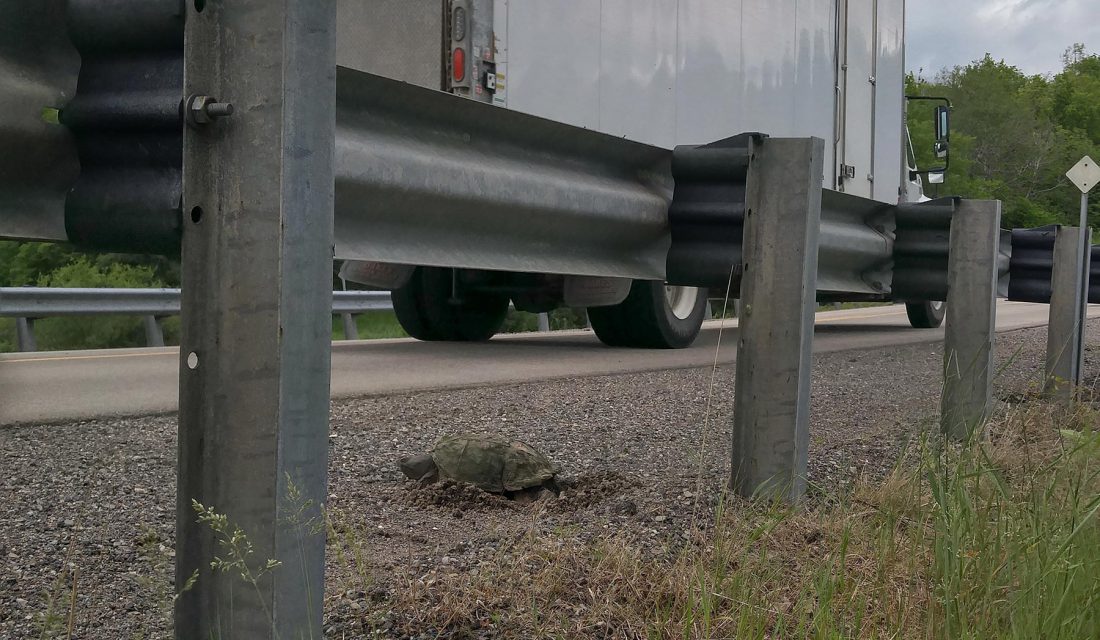
Many predators, such as raccoons and skunks like nothing more than to feed on some freshly laid turtle eggs. While nest predation is a natural threat, in many areas nest predators occur at higher than normal levels and they can eat most of the turtle eggs laid every year. Protecting the eggs helps give turtles a fighting chance and offsets some of the road kill that occurs every year.
One way to protect a turtle nest is through a nest cage. While nest cages can be used to protect some nests in natural areas, those on roadsides cannot be caged, since cages may interfere with traffic and the work of road maintenance crews.
Download Nest Protector How-To
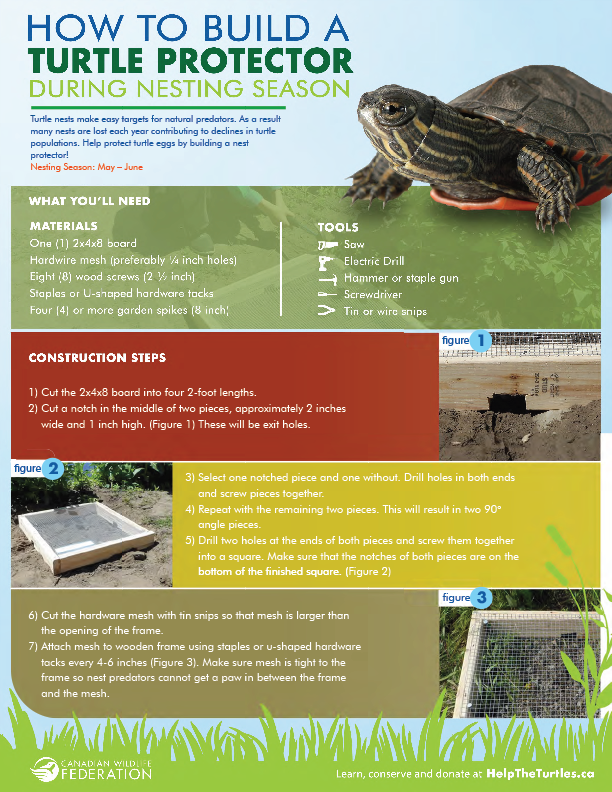
Unfortunately, gravel road shoulders make for attractive nesting locations for turtles. The loose gravel and sand make it easy for turtles to dig their nests, and sunny roadsides provide the necessary warmth the eggs need to hatch. Roadsides can be dangerous though, to both the nesting female, and the hatchlings that may end up on the road.
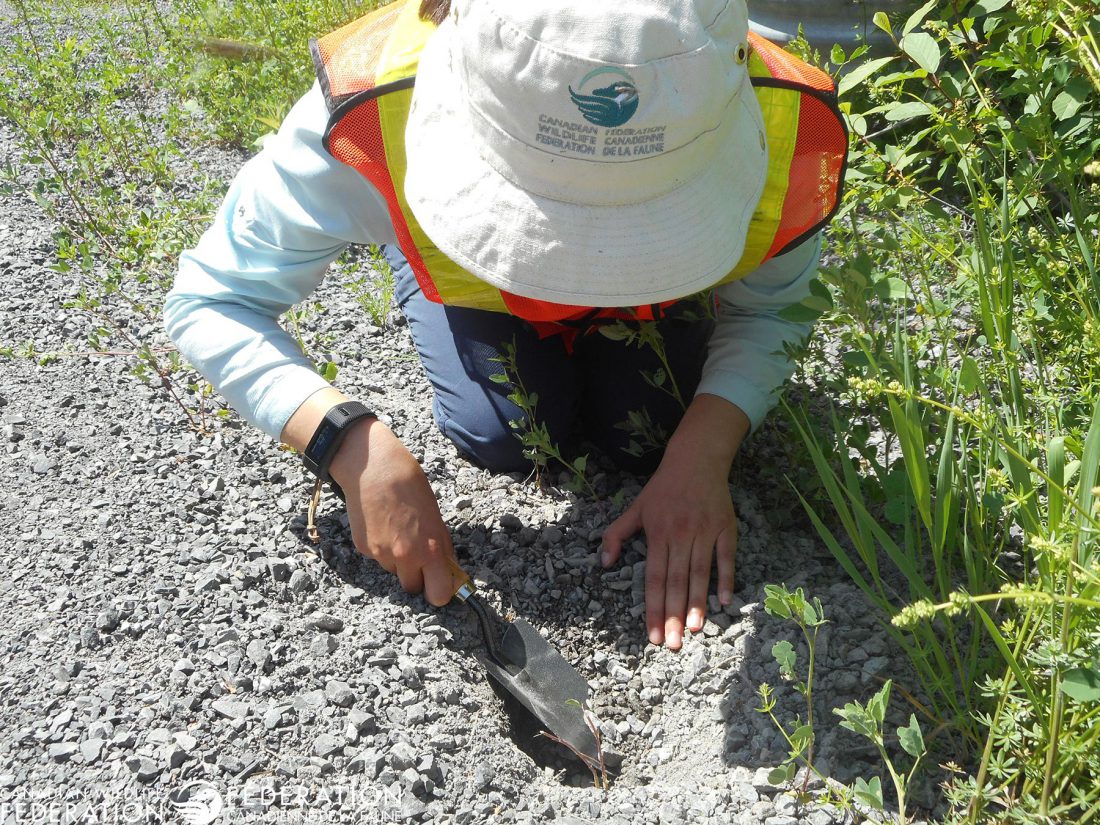
Another option is to collect the eggs once they have been laid and hatch them in captivity. That is what CWF is doing this year in the Ottawa area. Egg collection does require permits from the provincial government as incorrect incubation can cause the eggs to not develop or hatch.
Collecting turtle eggs is not as easy as it may sound. After a female turtle has laid her eggs, she packs the soil back into the hole and there is often no sign of the nest. The surest way to find a turtle nest is to find the female in the process of laying her eggs. This can involve a lot of searching in the evening, when most turtles are most apt to lay their eggs.
Great care has to be taken not to startle the turtle, or she may abandon her search for a nesting site until another evening. Once the female has finished nesting, we carefully dig up the nest and collect the eggs. After many long nights, the Turtle Team gathered more than 400 eggs from roadside nests!
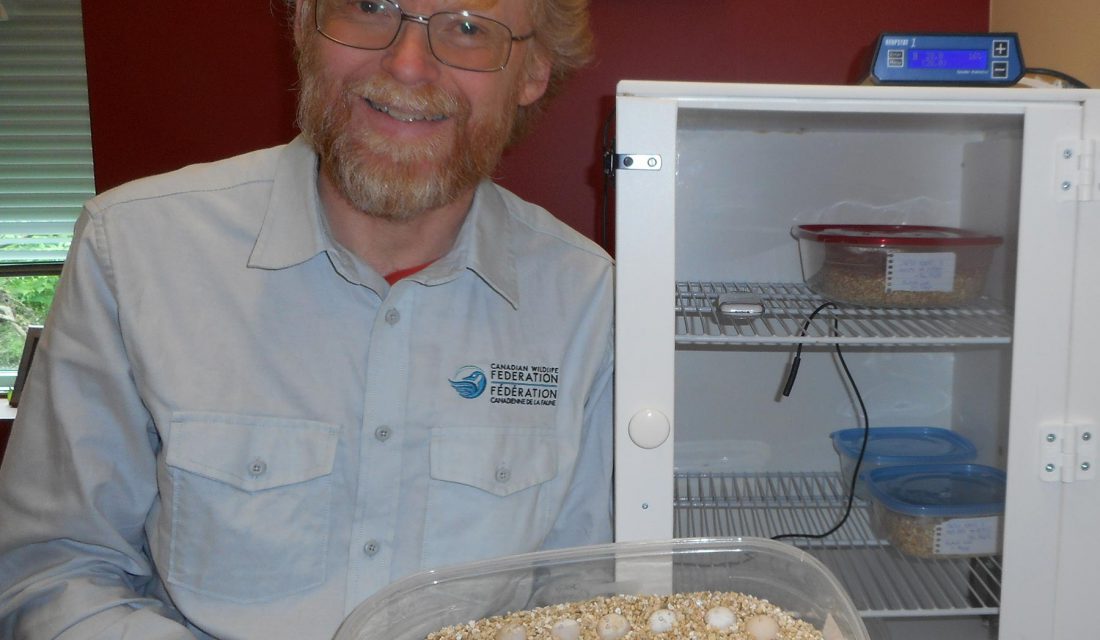
The eggs are kept in a special reptile egg incubator that maintains a constant temperature. The incubator contains eggs from two species at risk: Blanding’s Turtles and Snapping Turtles.
Blanding’s Turtle eggs are oval, whereas Snapping Turtle eggs are round, like tiny ping-pong balls! Blanding’s Turtle clutches contain about a dozen eggs, whereas Snapping turtle nests contain 30-40 or more eggs. The eggs from each nest are placed in a separate container filled with damp vermiculite, an artificial potting soil mixture.
For most kinds of turtles, the sex of the hatchlings depends on the temperature of the nest. Colder summers will generally produce more male turtle hatchlings, whereas hot weather will lead to more females hatching out. Our incubator is set to a temperature somewhere in the middle to produce a roughly equal mix of male and female hatchlings.

The first eggs of the year were collected in early June, and will hopefully start to hatch in early August. After the eggs hatch, the hatchlings from each nest will be released near the site of their nest and close to water.
Road mortality and habitat destruction are some of the greatest threats facing turtles today. Protecting nests through caging and off-site incubation is an important step we can take to help preserve turtle populations.

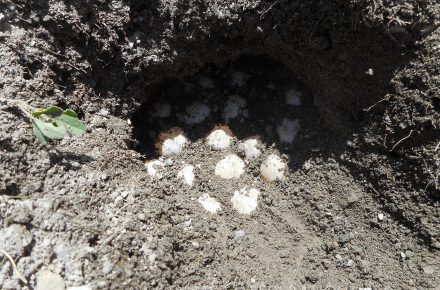
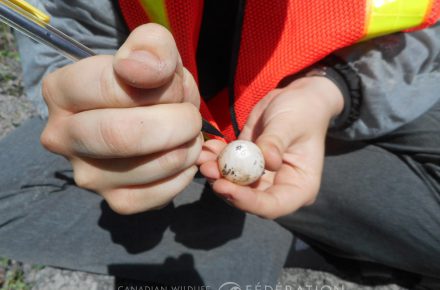


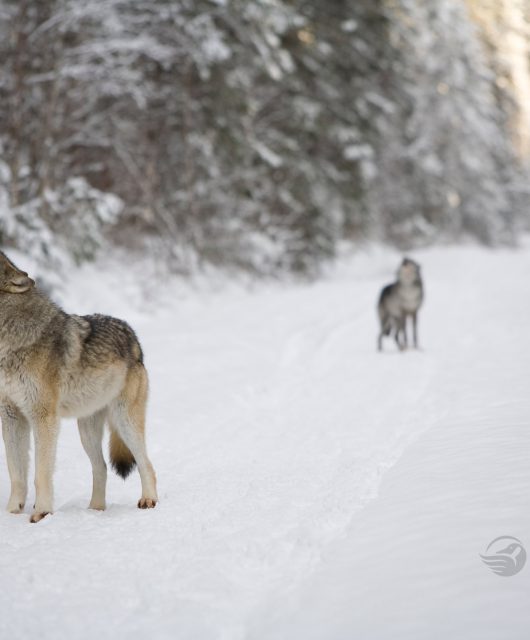
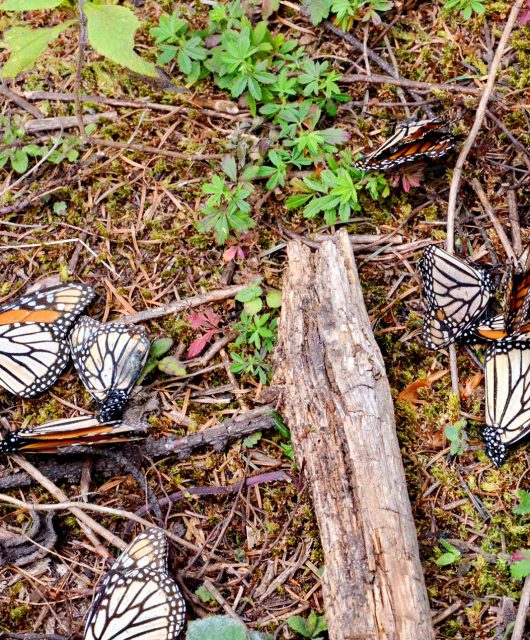

14 comments
Congratulations for rescuing the eggs. How many times you spent in average to find one nest?
Hi Max,
It is very hard to find a turtle nest after the female has laid her eggs. A nesting turtle will cover up her eggs so there is almost no sign that she nested. The CWF turtle team spent hours working in the evening looking for nesting turtles along roadsides so we could collect the eggs after they were laid. It can take a turtle two or three hours to lay her eggs, so even once a nesting turtle was found it could still be a slow process to collect the eggs.
Thanks for your question!
We just discovered a nest of turtle eggs while digging up around the side of our house while doing foundation work. It is on the north side, always in the shade. Is it too late in the season for these eggs to hatch? We’ve had snapping turtles hatch nearby, located in a sunnier location, at the beginning of the month. We would like suggestions on what we can/should do.
Oh dear! We’ll contact you directly, Clark, to help advise you.
10 June/20
Just watched a painted turtle laying eggs in a flower bed close to the house. Do you have suggestions as to how to build a protective cage? Other years nests have been quickly predated. Appreciate your help.
Cotterill, Ramsay Ward, west of Almonte
Hi Ralph,
That’s great! You can find a PDF on how to build a turtle egg protector: https://cwf-fcf.org/en/explore/turtles/htt_nest_protector_en_lr.pdf You can learn more here: https://cwf-fcf.org/en/explore/turtles/
We have two known locations of snapping turtle nests. They are both close to a major thoroughfare, one within our condominium community grounds and one just outside against the curb. Both are recent and we are concerned for the eggs both during incubation and while hatching. We could make turtle boxes to protect the eggs but can’t guarantee we will be there when they hatch to help the little ones, any suggestions would be appreciated. We are located in Guelph On, not too far from the university. Thank you.
We saw a turtle from the long behind our house lay eggs by our patio the other morning. The problem is we are building a pool and they were laid right where pavers will be going. Next week people working will be here to continue work on the pool. What do I do about the turtle eggs?
Just move them if they are in bad spot.
A turtle laid eggs beside our house what can we do to protect the eggs and help them hatch?
Hi Tom
Thank you for your comment! You can learn more about how to help our freshwater turtles here: https://cwf-fcf.org/en/explore/turtles/ or download the PDF on how to build your own nest protector: https://cwf-fcf.org/en/explore/turtles/htt_nest_protector_en_lr.pdf
Good luck!
An animal dug up a nest in my yard, there were eggs still in the nest along with eggs scattered in the ground.
I’m not sure the correct position they were in within the nest, is there a way to tell which way I should put them when I place them in a protective site?
I was out for a walk in a swamp/ creek area and came across a turtle nest. It was in a sandy spot and I could see that it had been dug out – Naturally, by a predator or human – I do not know.
There were six hatched/ open turtle eggs surrounding the nest hole. There was a skeleton of a baby turtle. I could see the spine and the chest plate.
Has this nest been disturbed by a predator or was it successful? Do predators eat the eggs whole? Do turtles eat or absorb their egg shell after hatching? Is there any way to figure out what species of turtle nested here?
Thank you for your time.
Note: I found this nest on October 9 Location : Northern Ontario
I have pictures if you think they would be of use, please contact me.
Hello
Whenever you see egg shell fragments on the surface around a hole in the ground that indicates that a predator dug up the nest and ate the contents of the eggs. Predators usually don’t eat the eggs whole but break open the eggs and eat the contents. If the nest hatched successfully, the hatchlings would dig their way to the surface and the egg shells would remain in the ground. Given that you found a dead hatchling, it is possible the nest was in the process of hatching when predated. There is a good chance that the nest from either a Painted Turtle, in which case the bottom shell will be reddish orange, or a Snapping Turtle, in which case the hatchling will be mainly black. If you post a photo of the hatchling we can probably identify it for you.